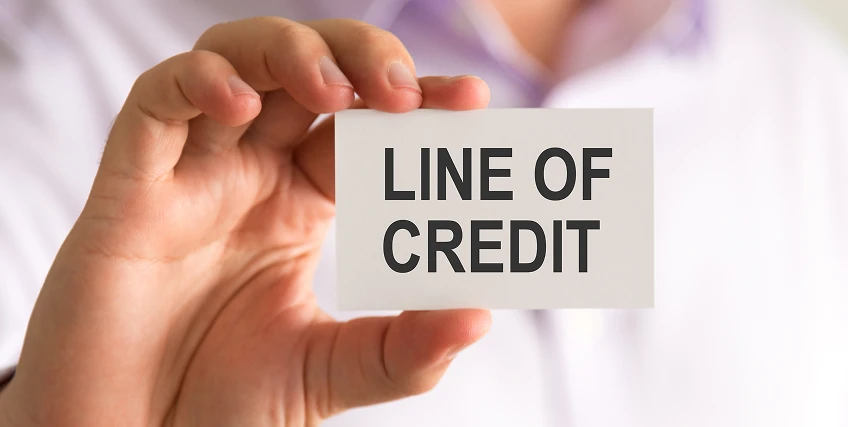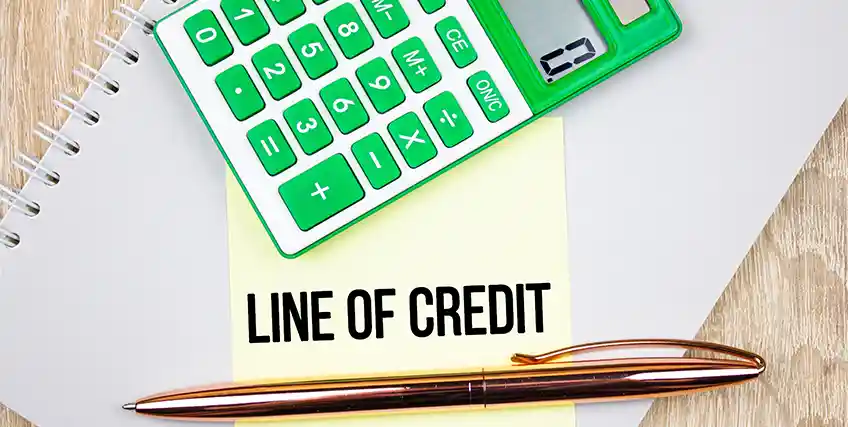The Impact of Retail Sales Reports on Business Line of Credit Decisions
March 5, 2025 | Last Updated on: March 5, 2025

Most of the time, Main Street business owners don’t use macroeconomic trends to make business decisions. Their businesses are local. But sometimes, nationwide trends can have a real impact on the capital you use in your business.
Economic indicators like the retail sales report are important resources for entrepreneurs for a few reasons. One of the most significant is how the report can affect business line of credit decisions. For many business owners, a business line of credit is a crucial funding source, and it’s necessary to understand how a national report can impact business credit.
In this article:
- Learn how a business line of credit can be impacted by the retail sales report.
- Explore other key reasons why the retail sales report is important for small business owners.
- Understand what small business owners can do to protect profits and properly utilize financing like a business line of credit.
What is a business line of credit?
A business line of credit is part traditional loan, part business credit card. A lender or credit card company approves a small business owner for a maximum credit amount based on their credit report. The business owner can then draw on this credit line to make business purchases, only paying interest on what they need.
Business lines of credit are particularly popular with seasonal business or invoice-based businesses that need working capital or to increase cash flow. Since the eligibility requirements are much lower than a term loan, your consumer credit and business credit report don’t need to be as strong as they would for a larger loan.
What is the retail sales report?
The retail sales report is a monthly report released by the U.S. Census Bureau and is one of the vital metrics used by financial institutions, investors, economists, and financial analysts to measure the health of the U.S. economy. Along with the monthly jobs reports, released by the Bureau of Labor Statistics (BLS), the retail sales report helps measure inflationary pressures. The report uses in-depth data from the sales of durable and nondurable goods over a specific period.
The report is made up of sales data from 13 major types of retailers, including:
- Car dealers and automotive parts dealers
- Food and beverage retail locations
- General merchandise stores and convenience marts
- Restaurants and bars
- Gas stations
The report is based on data collected from receipts and interviews with random retail stores throughout the United States. While it’s intended to capture a sample from every retail industry and product type, the data sets do not include service-based businesses, like travel and healthcare. Gas station data may also be excluded for volatility when analyzing the retail sales report because of fluctuating oil and fuel prices.
Retail Sales Report Phases
The retail sales report is released in three phases.
- The first is the advance report, which is published each month to report sales data from the prior month. The advanced report shares data from 5,000 retailers polled by the Census Bureau. The advance report is used as a reference to make financial forecasts or predictions.
- Later, a preliminary version is released that reveals the results from an additional 8,000 retail locations.
- The final revision comes out one month later and includes the data and analysis of all 13,000 retailers. Only 75% of entrepreneurs are estimated to respond to the survey request. The data is not adjusted to account for inflation, like with other government analysis tools, including the consumer price index (CPI) and the gross domestic product (GDP).
Since the retail sales report is composed of so much data, there are three general areas of focus used by business owners, financial market analysts, and economists.
- Advanced retail sales and its revisions – Gives users the overall picture of consumer spending and accounts for seasonal fluctuations
- Control group – A filtered group of sales, excluding auto, building materials, gas, office supplies, and tobacco
- Exclusions – Data points that exclude categories like cars and fuel provide an alternative to the control group numbers
How does the retail sales report affect GDP?
Consumer spending makes up a quarter of the gross domestic product (GDP), with investments, government purchases, and net exports being the other factors considered. The GDP represents the value of money in our country and is used as a financial measurement of economic health. Increases in GDP over time represent a positive economic movement, while decreases indicate an economic downturn.
Policymakers, like those at the Federal Reserve or the U.S. Central Bank, consider the published GDP when evaluating the inflation rate or analyzing recession threats. When the Fed raises interest rates, it does so to combat inflation and improve the country's overall economic position.
The GDP greatly contributes to the calculations and informed decisions used to determine those monetary policy changes. Since consumption is a large part of calculating GDP, the data provided by the monthly retail sales reports is valuable to economists.
Gross domestic product is measured in one of the following four ways:
- Real GDP – The sum of goods and services produced at constant prices, determined by a set base year.
- Nominal GDP – The value of goods and services produced at current market rates.
- Actual GDP – Measures the output of goods and services as of a certain interval of time.
- Potential GDP – Considers production as if the economic condition is stable with consistent product costs and zero unemployment.
Why the retail sales report is important for small business owners
The retail sales report matters to small business owners for several reasons, both specific and broadly.
- Shows consumer demand: The report helps owners make business decisions based on reported customer behavior and trends in consumer spending. Consumer trends inform entrepreneurs’ decision-making about purchasing, hiring activity, and the timing of rolling out new products.
- Inflation: The retail sales report is a strong indicator of the country’s inflation rate, which can drive up prices for businesses and consumers alike. Knowing how prices are expected to move could motivate you to stock up on inventory or raw materials now.
- Lending activity: Poor retail sales reports can lead to high inflation, which often leads to increases in the price of borrowing. When American term loans and short-term financing like working capital loans become more expensive, a small business line of credit is a more attractive option.
What can small business owners do to protect their revenues?
The effects of inflation on small business owners and skyrocketing supply costs are concerning. Entrepreneurs in established businesses and those who opened a new business in slow economic periods wonder how to increase profit margins at their retail businesses. While every business is unique, these tips can help small businesses respond to poor retail sales reports.
Look for introductory business lines of credit
If you don’t have a business line of credit, any business can benefit from one. Having an amount of money set aside to help you navigate slow periods is crucial, and many traditional or online lenders offer business lines of credit with introductory benefits like 0% annual percentage rates (APR) or no annual fee for the first year.
These benefits tend to be short-lived, but they can be great resources for retail businesses that expect to see a temporary dip in customer demand. Provided you have a strong credit history and balance sheets, you can get a solid credit limit to draw from to supplement any revenue loss. With the right intro offer, you won’t have to pay any interest on what you draw from your credit line.
Get creative with advertising
An economic downturn is often the perfect time to focus on retail marketing. Protect future revenues by bringing in new customers and enhancing the customer experience for your loyal shoppers.
Consider launching a social media marketing campaign using Facebook or LinkedIn. If social media is not for you, take advertising offline and consider some in-person marketing strategies, like rewards programs, discount programs, and referral bonuses. Even partnerships with local competitors can be a great way to drum up business for both of you.
Again, if you’re tight on cash, this is a great opportunity to use a business line of credit to pay for campaigns now and repay when you regain financial stability.
Optimize the business tools you already have
Utilizing in-store tools is a great way to stay ahead of changes in your business. Make it a habit to run daily sales reports through the Point of Sale (POS) machine or cash register reports.
Take note of the percentage of sales made with credit cards versus cash. Note whether certain sales associates are significantly outselling other employees. Review peak hours and consider altering business hours and staffing to optimize store sales.
Most POS systems, especially those equipped for real-time checkout, will have user reports built into their software that show sales trends over time. Run those reports at least weekly to stay on top of the trends and adapt when necessary. It will help inform new sales initiatives for your business.
Lean on financing options
When interest rates rise, many entrepreneurs worry about the monthly expenses of their store leases or commercial real estate mortgages. Reaching out to a small business loan expert is a great way to see if you can increase monthly cash flow by refinancing old business debts, like real estate loans.
Business loans are a great financial resource for entrepreneurs who are struggling to cover monthly operating expenses during times of decreased customer spending, seasonal fluctuations, and increased interest rates.
However, for entrepreneurs who need faster access to cash than the weeks or even months it usually takes to underwrite a traditional loan, a business lines of credit offers fast, easy access to the capital you need.
Bottom Line
The retail sales report offers a snapshot of consumer spending and consumer trends. It’s a strong indicator of the impact of inflation and can help retail store owners make smarter decisions about financing.
One good way to protect your business is by taking advantage of introductory offers on business lines of credit. If you already have one, use it responsibly to invest in value-adds to your business like new equipment, marketing campaigns, and tools to improve your customer service and experience.
FAQs
What is the retail sales report?
The retail sales report is a monthly report released by the U.S. Census Bureau that cites survey results from 13 key retailer industries to forecast consumer trends and economic activity.
What is a business line of credit?
A business line of credit is a cross between a bank loan and a business credit card. When approved, you have access to a maximum credit amount, but you only pay interest on the amount you use, rather than on the full amount. Once you pay back any amount you use, plus interest, you’ll have access to the full amount again.
What are retail sales report phases?
The retail sales report is released in three phases: the advance report, preliminary report, and final report. Each component uses data collected from 13,000 retailers to project financial forecasts or predictions.
Why is the retail sales report important for small businesses?
The retail sales report is important for several reasons. It helps small businesses predict consumer demand, prepare for inflationary trends, and help plan for any potential financing necessary.
How does the retail sales report impact a business line of credit?
Because the retail sales report offers forecasts into consumer trends and inflation, it can help small business owners decide whether or not now is a good time to invest in growth or take on debt to help pay for business needs.
Frequent searches leading to this page
business line of credit for new business, unsecured business line of credit, line of credit business loans, retail sales report today




